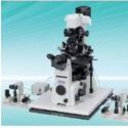Determinants of exposure levels, metabolism, and health risks of phthalates among pregnant women in Wuhan, China.
Ключови думи
Резюме
Concerns on minimizing health risks of phthalates have been raised due to their widespread exposure and well-documented endocrine disrupting properties, but the determinants of levels, metabolism, and health risks of phthalate exposures have not been thoroughly characterized among the Chinese population, particularly pregnant women. The metabolites of five phthalates were analyzed: diethyl (DEP), diisobutyl (DiBP), di-n-butyl (DnBP), di-(2-ethylhexyl) (DEHP), and benzyl butyl phthalate (BBzP) were analyzed in urine samples collected from 946 mothers in Wuhan during 2014-2015. We applied linear mixed models to investigate the relationships between biomarkers (e.g., urinary concentrations of phthalate metabolites, phthalates, and ratios of metabolites) and factors including sampling seasons and epidemiological characteristics. We calculated estimated daily intake (EDI) using average phthalate concentrations over three trimesters and hazard index (HI) by dividing EDI by tolerance daily intake. About 24.9% of participants were at health risks with HI > 1. The largest health risks were driven by one specific phthalate (DnBP or DEHP). We observed lower urinary levels of phthalate metabolites in winter. Elevated levels were found in mothers with higher education levels or those employed. Mothers who got pregnant on purpose had lower phthalate concentrations than those got pregnant by accident. More recent exposure to phthalates was observed among groups of mothers giving birth to girls, or those who got excessive gestational weight gain. Younger mothers were more susceptible to phthalate exposure. This repeated measurement study suggests that the intervention should be taken to limit application and production of DnBP and DEHP, and highlights that typical demographic factors should be taken into account in demographic studies.


